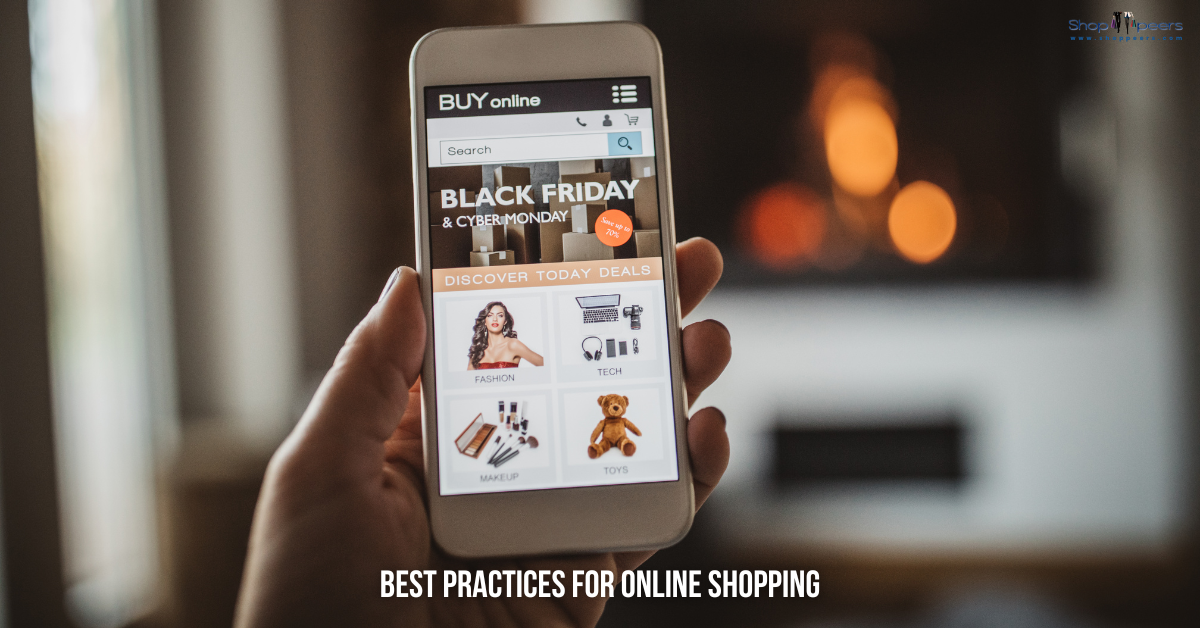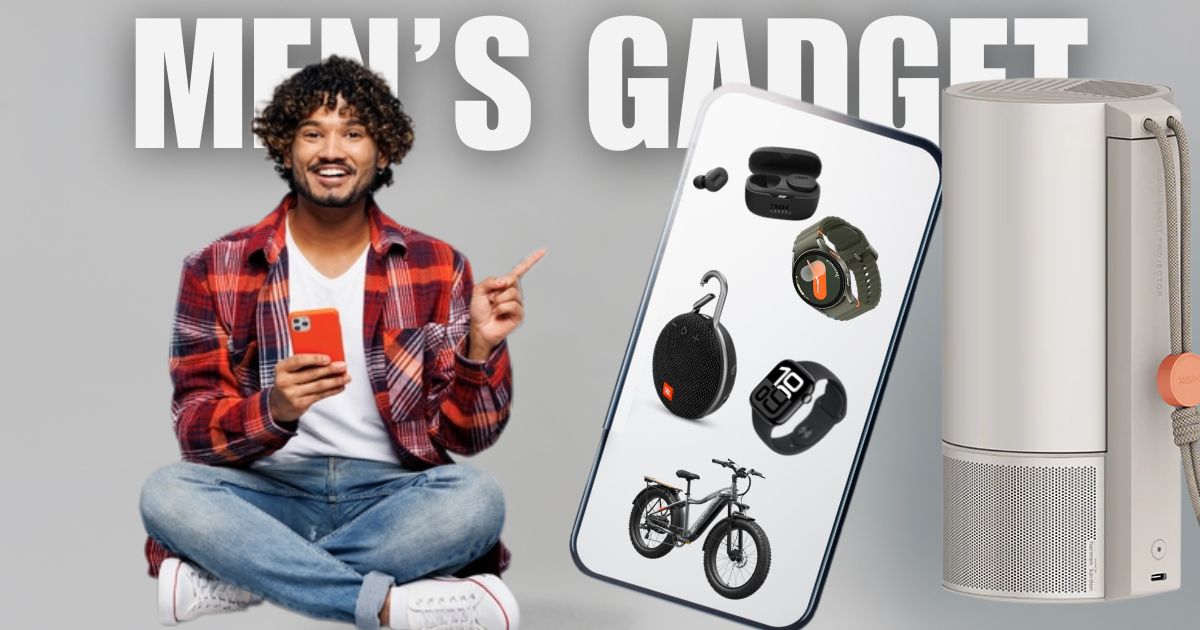Black Friday shopping is no longer just about elbowing through crowds outside a store at dawn—it’s become a strategic game of prepping early, comparing deals, and leveraging online and offline channels to get the best value. Whether you’re hunting for gadgets, chic fashion pieces, home décor, or wellness buys, the right approach can make all the difference between feeling smart and feeling buyer’s-remorse.
In this article, you’ll discover proven tips and actionable steps to master your Black Friday shopping experience. We’ll walk you through planning, deal-hunting, avoiding common pitfalls, and making the most out of seasonal offers. Get ready to feel confident and empowered as you gear up for one of the biggest shopping events of the year.
1. Why Black Friday Shopping Still Matters
Even with online sales happening year-round, Black Friday remains a standout moment for consumers and retailers alike.
Key statistics to keep in mind
-
U.S. online sales on Black Friday 2024 reached roughly US$10.8 billion, representing a 10.2% increase from 2023.
-
Globally, online Black Friday sales in 2024 hit about US$74.4 billion, up 5% from the year before.
-
Mobile commerce is now dominant: more than half of online Black Friday purchases come through mobile devices in many markets.
-
Among consumers, about 71% planned to shop online on Black Friday in the U.S. in recent surveys.
These numbers show that if you approach Black Friday shopping with a plan, the opportunities are significant.
What this means for you
-
With so much competition and volume, the best deals often get claimed quickly—being ready matters.
-
Because mobile is such a big factor, your smartphone is a key tool (for tracking, comparing, ordering).
-
Both online and physical retailers will feature promotions; understanding how each works gives you an edge.
2. Pre-Shopping Preparation: Planning for Success
To make your Black Friday shopping effective (and not chaotic), a clear prep phase is crucial. This section outlines what you should do before the big day.
Step-by-step prep guide
-
Set your budget
-
Decide how much you’re willing to spend overall and per category (e.g., gadgets vs fashion vs home).
-
Knowing your limit helps avoid impulse buys that you’ll later regret.
-
Example: If you plan to spend US$500 total, you might allocate US$300 for tech, US$150 for fashion and US$50 for gifting.
-
-
Make a priority list
-
Write down the products or categories you’re most interested in (e.g., “new laptop”, “winter coat”, “smart home device”).
-
Rank them by importance: what you must get versus nice-to-get.
-
By having this list, you avoid being distracted by every deal and chasing low-value bargains.
-
-
Research current prices
-
Spend time before Black Friday checking the usual (non-sale) prices for your target items. This gives you a “baseline” so you can recognise a real discount.
-
Use price-tracking tools or browser extensions where available.
-
Example: If a gadget is normally US$399 and drops to US$349, you know it’s a ~13% discount—not all deals are equal.
-
-
Set alerts and follow deal lists
-
Subscribe to retailer newsletters or price-alert services.
-
Set alerts for your target items so you are notified when the price drops.
-
Many retailers begin their Black Friday deals early—sometimes days or weeks ahead—so staying informed gives you an edge.
-
-
Decide your channel(s): online, in-store, or both
-
Online shopping allows flexibility, early access, and easier price comparisons.
-
In-store shopping might offer exclusive doorbusters or limited-time deals.
-
Many savvy shoppers choose a hybrid: check online first; if a deal is better in-store, go early.
-
According to data, although online continues growing, physical store traffic is still meaningful.
-
Pre-shopping checklist
| Task | Why it matters |
|---|---|
| Budget set | Prevent overspending and impulse buys |
| Priority list | Focus attention on what matters |
| Baseline prices checked | Recognise true discounts |
| Alerts set | Don’t miss the best offers |
| Channel plan defined | Use both online/store to your advantage |
Custom Looks, Tailored Light: Discover the TwoPages Difference
Curtains are more than just fabric—they’re the soul of your space. Explore TwoPages for customizable drapes that match your vision, your vibe, and your windows perfectly. From blackout to linen, modern to classic, we’ve got you covered. Visit twopagescurtains.com today and let your windows make a statement while enjoying exclusive savings.
3. Smart Online Deal-Hunting for Black Friday
Online shopping has become the backbone of Black Friday maintenance. Here’s how to navigate it like a pro.
Key online strategies
-
Start early: Many online portals begin Black Friday promotions days in advance. Retailers often tease “early access” deals. Staying alert gives you the first pick.
-
Compare across retailers: Don’t buy the first “great deal” you see. Use multiple retailers, check shipping cost, tax, delivery time.
-
Use filters and sorting: When browsing, sort by discount size, or filter by “limited quantity” to find the best clearance deals.
-
Check coupon codes & stacking: Aside from the headline discount, there may be extra codes or coupons you can stack (e.g., extra 10% off for email subscribers).
-
Watch for flash sales / timed deals: Some deals appear only for a short period — maybe a few hours or minutes. Be ready.
-
Check reviews & seller reputation: A large discount is great, but if the seller is unreliable or the return policy is weak, the risk may outweigh the savings.
-
Be mindful of shipping & returns: Sometimes, a great deal has hidden costs in high shipping ora difficult return policy.
-
Mobile-friendly browsing: As noted, a large portion of Black Friday online purchases are via mobile. Ensure your mobile experience is smooth—apps may offer exclusive deals.
Example scenario
Let’s say you are targeting a smart speaker. You check the usual price four weeks out — say US$149. On Black Friday week, you spot one retailer offering it for US$119, but shipping is US$15 and return is 30 days. Another retailer offers it for US$129, with free shipping and a 60-day return. Which is better? The true “cost” of the first is US$134 (119 + 15). So the second deal is actually a better value — even though the headline price is higher.
Key online pitfalls to avoid
-
Buying without verifying the regular price → you might pay a “discounted” price that’s still higher than usual.
-
Ignoring shipping/return costs → a cheap item can become expensive with extra costs.
-
Focusing only on “big name” retailers and missing smaller brands with competitive offers.
-
Waiting too late for flash deals and missing stock.
4. In-Store and Hybrid Strategies for Black Friday Shopping
While online is huge, the in-store or hybrid route (online + pick-up) still offers unique opportunities.
Why consider in-store or hybrid
-
Some retailers offer doorbuster deals only in-store or for early morning visitors.
-
You can inspect the item in person, test it, and sometimes negotiate or ask for extra perks.
-
Hybrid (online buy + in-store pick-up) can avoid shipping delays and offer faster access.
Step-by-step for in-store/hybrid
-
Check in-store deal ads early
-
Often, the store will publish flyers or web lists of in-store-only deals.
-
-
Know store policies
-
What time do they open? Are there queues? Is the stock limited?
-
Can you reserve online and pick up later? Many retailers expand “click-and-collect”.
-
-
Allow extra time for travel/parking
-
On Black Friday morning, traffic and store queues may be heavy—factor that into your plan.
-
-
Use your online research
-
Having checked the regular price and online offers helps you decide if the in-store deal is worth it.
-
-
Leverage a hybrid opportunity
-
Example: Buy online in the morning when inventory is fresh, then pick up later when you’re nearby.
-
-
Bring coupons or membership benefits
-
Many stores offer loyalty member perks, extra discounts for members, or email subscribers.
-
-
Be ready for returns
-
In-store deals may have shorter return windows or “no returns” on doorbuster items—check first.
-
Common in-store errors
-
Assuming “in-store only deal” is always better without comparing online.
-
Arriving too late and stock being sold out (especially limited-quantity items).
-
Not checking hidden costs (e.g., “store pick up only”, or extra fees).
-
Overlooking online reviews, just because you see the item physically doesn’t guarantee it’s the best value overall.
5. Category-Specific Tips: Tech, Fashion, Home & Lifestyle
Because you said you’re interested in gadgets, technology, fashion, home, and lifestyle, here are tailored tactics for each major category during Black Friday shopping.
Tech & gadgets
-
Focus on “last year’s model”: Newest models often cost more; when a year-old version gets discounted, you might get similar functionality for less.
-
Check “open box” or refurbished deals: Some retailers mark down open-box items during Black Friday to clear stock.
-
Bundle accessories: Some tech deals include bundles (free headphones with laptop purchase, etc.).
-
Check compatibility/accessories: A large discount on a printer is only helpful if ink/toner costs aren’t sky-high.
-
Beware of gimmicks: Some so-called “tech deals” may include items with minimal discount but heavy promotion.
Fashion & accessories
-
Think seasonally: Black Friday is late autumn (or early winter in many places). For fashion, deals on winter coats, boots, and layering pieces are strong.
-
Check for sizing/fit: Online fashion deals can tempt you, but returns may be more complex. Buying in-store gives you try-ons.
-
Mix staples and trend items: Use deals to pick up wardrobe staples (e.g., quality jeans) plus one trendy piece.
-
Watch shipping/return policy in online fashion deals: Free return is a big plus.
-
Don’t buy “just because”: If a dress is 70% off but you’ll never wear it, it’s not good value.
Home & lifestyle (furniture, decor, wellness devices)
-
Check freight/shipping costs: Large items may have extra delivery charges even with a big discount.
-
Inspect quality: A Lower price may mean cheaper materials. For furniture/design items, check finish, materials, and durability.
-
Look at long-term use: A home device might have a big discount, but if it will be obsolete in six months, maybe a smaller purchase is wiser.
-
Combine deals with seasonal refresh: Black Friday is a great time to pick up decor items, kitchen appliances, or wellness devices in advance.
-
Size/fit matters: For furniture or decor, measure your space ahead of time so the item fits when delivered.
6. How to Spot the Real Deal: Discount Insights & Myths
Not all “big discounts” are created equal. Here are ways to filter hype from genuinely good deals.
What kind of discount is worth it?
-
According to research, the average discount across major retailers during Black Friday can be in the range of 30-40% depending on product category.
-
For electronics, discounts tend to be lower (e.g., 18-25%) because margins are tighter, whereas some fashion or toys may see deeper cuts. If you see a discount of only 10–15% on a high-value item without any bonus (bundle/freebie), consider whether you might wait for a better deal.
Common discount myths
-
Myth: The first deal you see is the best → In reality, by checking baseline prices, you may realise an even better deal appears later.
-
Myth: Everything is massively discounted on Black Friday → Some items may have been discounted already or the markdown is not as deep as the hype.
-
Myth: Online deals are always better than in-store → Sometimes, in-store gives exclusive offers; always compare.
-
Myth: Buy now, worry about returns later → A good deal that traps you in a poor return policy may cost you more in regret.
Quick checklist to spot the real deal
-
Has the product been priced significantly lower than its usual price?
-
Are the shipping and return costs reasonable?
-
Is stock limited (which may lead to rushed purchases)?
-
Is the discount genuine or is the “original price” artificially inflated?
-
Are you buying something you really want/need (vs impulsive)?
Running through this quick mental filter helps you make smarter decisions.
7. Mistakes to Avoid & FAQs on Black Friday Shopping
Here are frequent mistakes people make during Black Friday shopping, along with some commonly asked questions and their answers.
Mistakes to avoid
-
Chasing the “doorbuster” hype and ignoring value: Just because something is labelled “doorbuster” doesn’t mean it’s a good deal for you.
-
Overspending beyond budget: Buying many items because “they’re cheap” can blow your budget and result in underused purchases.
-
Ignoring returns policy: You may miss returns deadlines or find return shipping is costly.
-
Buying new-release tech at full price: Sometimes waiting a little longer means larger discounts once consumer demand falls.
-
Neglecting to compare online vs store: Some shoppers go in-store out of tradition and miss better online deals, or vice versa.
-
Not checking that the deal is real: Without knowing the regular price or checking reviews you might overpay.
-
Getting caught in supply/shipping-delay traps: Big promotions generate high demand, and shipping may be slow or items out of stock.
FAQs
Q: When exactly is Black Friday?
A: Traditionally, in the U.S., it’s the Friday following Thanksgiving (i.e., the fourth Thursday in November). In global markets, the exact date may vary.
Q: Are Black Friday deals only on that one day?
A: No — many retailers now run deals across “Cyber Week” (Thanksgiving through Cyber Monday) and even earlier in November. Being flexible can help you catch early access.
Q: Is online always better than in-store?
A: Not always. Online offers advantages (ease, comparisons, mobile access), but in-store may have exclusive doorbusters, local stock variation or pick-up benefits. A hybrid approach works best.
Q: What if I miss the best deal?
A: Some deals replenish, some don’t. But you can still find good value in the days after Black Friday, especially if you monitor prices and time your purchase.
Q: How do I factor shipping and returns into the deal?
A: Always add the estimated shipping cost to the discounted price to compare the “true cost”. Check the return period and its conditions if you’re unsure about the item.
8. Lifestyle & Context: Beyond the Deal
Shopping smart isn’t just about scoring the cheapest price—it’s about making purchases that fit your lifestyle, goals and context.
Align with your lifestyle
-
Minimalist approach: If you prefer fewer, high-quality items, use Black Friday to invest in quality rather than quantity.
-
Gift buying: Black Friday is ideal for holiday gift purchasing. Research shows a large portion of Black Friday spending is on gifts.
-
Tech upgrade cycles: If you always update your phone or laptop every 2-3 years, plan your Black Friday purchase accordingly—timing matters.
-
Sustainable/ethical choices: If you care about sustainability, check that discounted items meet your criteria (brand ethics, durability, recyclability).
-
Lifestyle markets (fashion, wellness): For fashion or wellness, Black Friday offers the chance to try new brands at lower risk (thanks to discounts), but always check return policies.
Seasonal & regional context
-
In the U.K. and other non-U.S. markets, Black Friday has grown significantly; however, different shipping/logistics/returns norms apply.
-
Consider currency conversion, import duties (for global deals), and local warranty/repair support when buying electronics abroad.
-
If you live in a region with extreme weather or a specific climate (e.g., in the Philippines or Southeast Asia), check whether “winter-season” fashion deals make sense for your local climate—or whether you should focus on year-round items or travel-friendly gear.
9. Your Step-by-Step Action Plan for This Year
Here’s a condensed action plan you can follow for your next Black Friday shopping event.
-
4–6 weeks before
-
Set your budget.
-
Write down your wish list and priority items.
-
Research regular prices and current deals for those items.
-
Subscribe to retailer newsletters, set price alerts.
-
-
2–3 weeks before
-
Monitor “early access” deals as many retailers begin promotions ahead of the actual day.
-
Check shipping/return policies for items you’re planning to buy.
-
Re-evaluate your list: remove things you no longer need, or add items that became “must-haves”.
-
-
During Black Friday week
-
Use your mobile device and desktop to keep watching deals.
-
Compare stores (online vs in-store).
-
Use coupons/additional stacks if available.
-
For in-store: arrive early, know opening times, queue if necessary.
-
For online: track stock levels; if you find a deal, act quickly.
-
-
After purchase
-
Save receipt and proof of purchase.
-
Note return deadlines.
-
Evaluate the purchase: did you get the value? If not, decide if you’ll return.
-
-
Post-event review
-
Look back at how you did: Did you stick to budget? Did the deal become good value?
-
Use the learning for next year’s planning.
-
10. Final Thoughts: Making the Most of Black Friday Shopping
Black Friday shopping offers a powerful opportunity to save money and access great deals—but only if you approach it with strategy and clarity. By doing your homework ahead of time, comparing real value, staying aware of hidden costs, and aligning purchases with your lifestyle, you turn what could be a chaotic bargain hunt into a smart, efficient shopping routine.
Your goal isn’t just to buy less or buy more—it’s to buy better. Use Black Friday as a tool to make intentional purchases that deliver real value, rather than chasing every “big sale” hype. With the prep and tips above, you’re well-equipped to navigate Black Friday with confidence and come out ahead.















